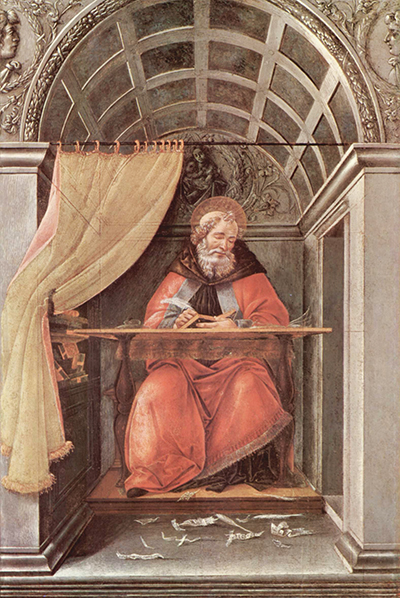St Augustine in his Cell is one of two paintings by Sandro Botticelli that were also known as St Augustine in his Study, with this painting being completed around 1494.
St Augustine in his Cell is now owned by the Uffizi Gallery, one of the most important Renaissance art museums in the world and a worthy host of some of Botticelli's finest work. There are also large collections of other masters such as Raphael and Michelangelo here too.
Botticelli was one of the earliest artists capable of accurately depicting architectural features within their work, which he would normally do to add interest to the background behind his full length portrait figures. Whilst not producing actual architectural drawings for real buildings, such as Leonardo da Vinci, Michelangelo or Raphael, he played an important role in bridging the gap between art and architecture.
It is the curved ceiling which would have been particularly challenging to reproduce accurately, with any mistakes being immediately obvious to even the untrained eye. Small errors with regards facial or anatomical features are also far easier to spot than those within the landscape genre, where natural variation can explain much.
The Renaissance artists took many saints into their work, with it being an inspirational theme to address. Each saint would also represent different things, bringing a choice depending on the symbolism required for each particular fresco, drawing or sculpture.
Augustine of Hippo was an early Christian theologian and philosopher from what is now termed, Algeria. He was prominent in the 4th and 5th century, and was respected for his influence on western religion and philosophy.
Botticelli featured Saint Augustine again with St Augustine in his Study and Transfiguration St Jerome St Augustine. Many other well known artists from the European Renaissance would also use him an inspiration for fresco work, including Raphael, Michelangelo and Peter Paul Rubens.




